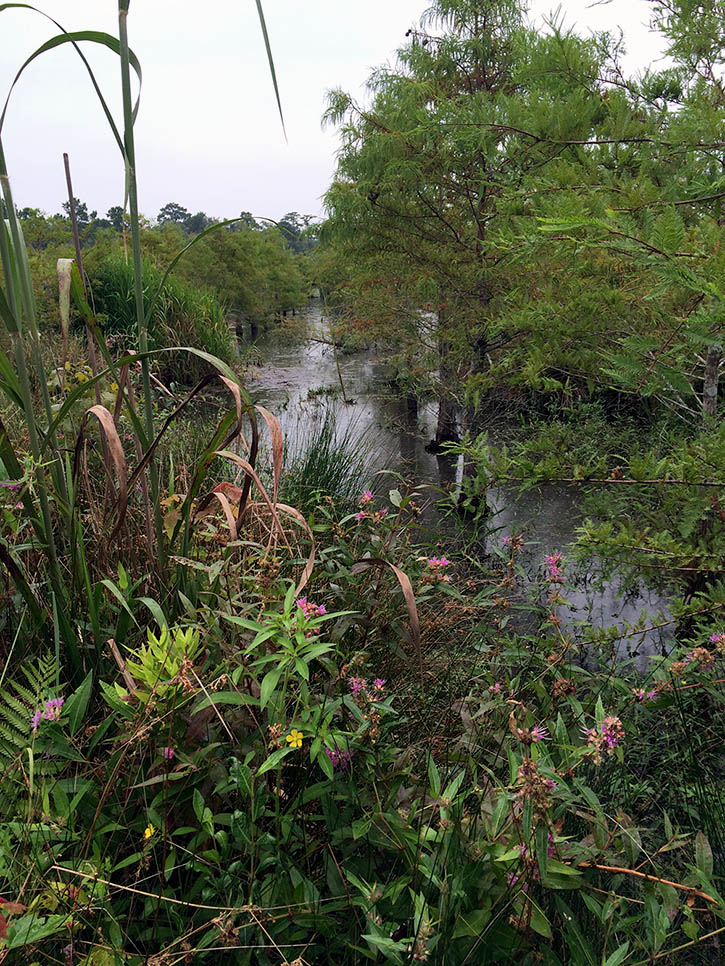
DURHAM, N.C. — The Albemarle-Pamlico Peninsula covers more than 2,000 square miles on the North Carolina coastal plain, a vast expanse of forested swamps and tea-colored creeks. Many people would probably avoid this place, whose dense thickets of cane and shrubs and waterlogged soils can slow a hike to a crawl.
“It’s hard fieldwork,” says Duke researcher Steve Anderson. “It gets really dense and scratchy. That, plus the heat and humidity mixed with the smell of sulfur and the ticks and the poison ivy; it just kind of adds up.”
But to Anderson and colleagues from Duke and North Carolina State University, these bottomlands are more than impenetrable marsh and muck and mosquitoes. They’re also a barometer of change.

Most of the area they study lies a mere two to three feet above sea level, which exposes it to surges of ocean water — 400 times saltier than freshwater — driven inland by storms and rising seas. The salt deposits left behind when these waters recede build up year after year, until eventually they become too much for some plants to cope with.
Trudging in hip waders through stunted shrubs and rotting tree stumps, Anderson snaps a picture with his phone of a carpet of partridge berry trailing along the forest floor. In some parts of the peninsula, he says, the soils are becoming so salty that plants like these can no longer reproduce or are dying off entirely.

In a recent study the team, led by professors Justin Wright and Emily Bernhardt of Duke, and Marcelo Ardón of NC State, surveyed some 112 understory plants in the region, making note of where they were found and how abundant they were in relation to salt levels in the soil.
The researchers identified a ‘tipping point,’ around 265 parts per million sodium, where even tiny changes in salinity can set off disproportionately large changes in the plants that live there.
Above this critical threshold, the makeup of the marsh floor suddenly shifts, as plants such as wax myrtle, swamp bay and pennywort are taken over by rushes, reeds and other plants that can better tolerate salty soils.

The hope is that monitoring indicator species like these could help researchers spot the early warning signs of salt stress, Anderson says.
This research was supported by grants from the National Science Foundation (DEB1713435, DEB 1713502, and Coastal SEES Collaborative Research Award Grant No. 1426802).
CITATION: “Salinity Thresholds for Understory Plants in Coastal Wetlands,” Anderson, S. M., E. A. Ury, P. J. Taillie, E. A. Ungberg, C. E. Moorman, B. Poulter, M. Ardón, E. S. Bernhardt, and J. P. Wright. Plant Ecology, Nov. 24, 2021. DOI: 10.1007/s11258-021-01209-2.

